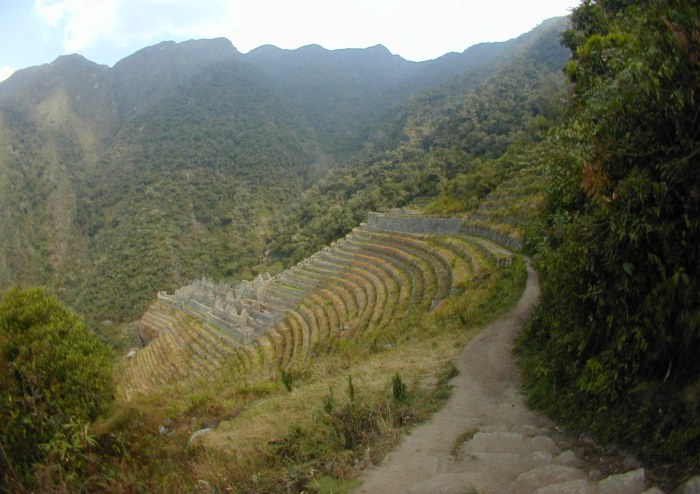| Exploring Wiñay Wayna | ||||||||
|
|
||||||||
 |
||||||||
|
|
||||||||
| About Winay Wayna:
Wiñay Wayna is an Inca site, neighbor to Machu Picchu, on an elevated perch overlooking the Urubamba River. It was discovered by the Wenner Gren Scientific Expedition to Hispanic America, which investigated both archaeological sites and native Andean peoples in 1940-42. Paul Fejos and his team documented a number of sites on or near one of the Inca roads leading toward Machu Picchu, a road now known as the "Inca Trail" by the thousands of trekkers who pass across it annually. The name Wiñay Wayna was subsequently given to the ruin by the eminent Peruvian archaeologist, Dr. Julio C. Tello, which Fejos reports as meaning "Eternal Youth."
Navigation:
|
||||||||